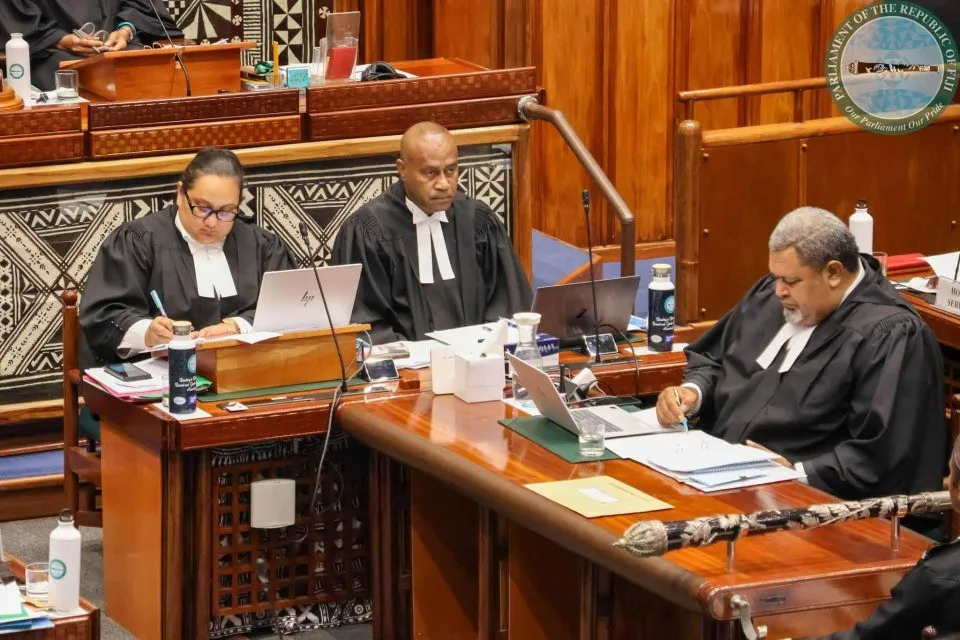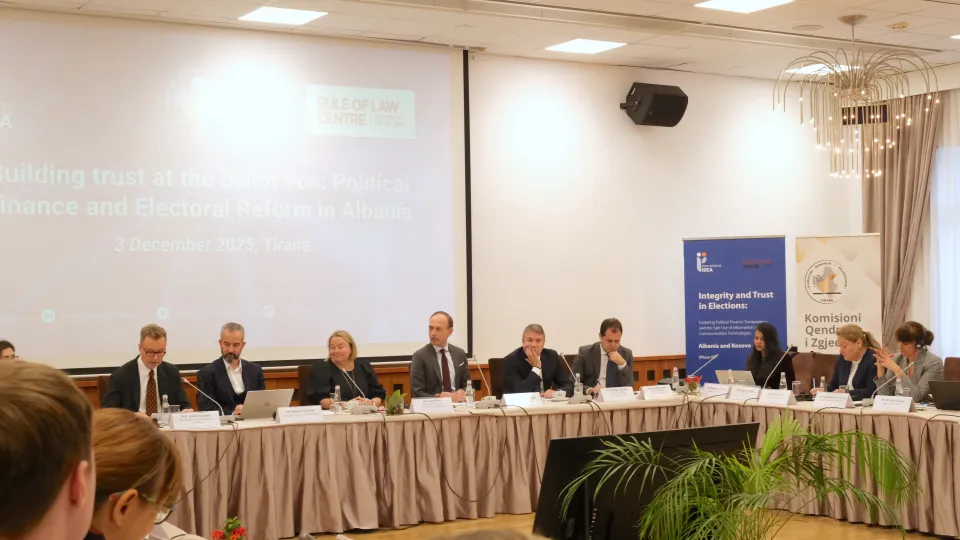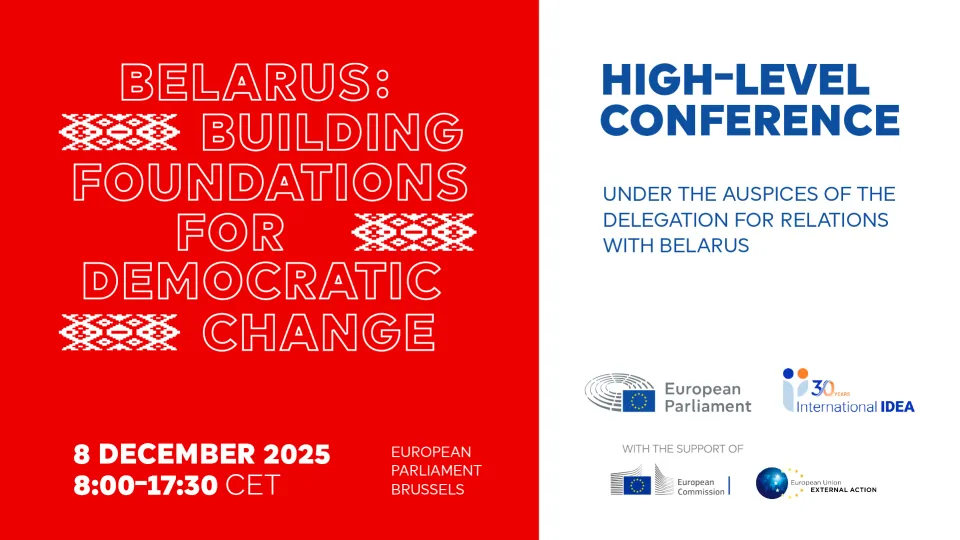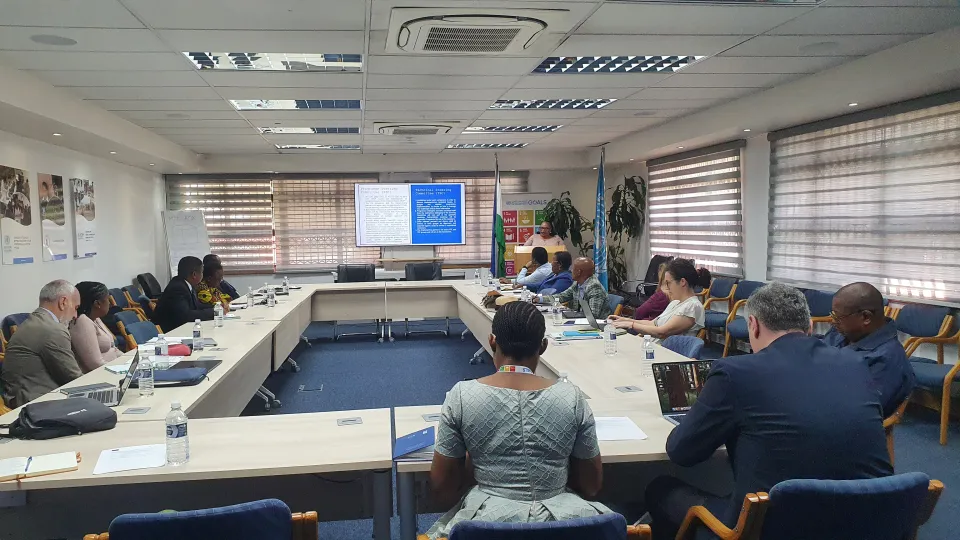Explainer: Supreme Court of Fiji’s Advisory Opinion on the amendment provisions of the 2013 Constitution of Fiji

Disclaimer: Opinions expressed in this commentary are those of the authors and do not necessarily represent the institutional position of International IDEA, its Board of Advisers or its Council of Member States.
Prepared by International IDEA, 21 October 2025
Introduction
On 29 August 2025, the Supreme Court of Fiji gave an advisory opinion on the rules for constitutional amendment set out in the Constitution of Fiji 2013.
This explainer outlines the key constitutional questions, the background to the case, the arguments put to the court, and the court’s opinion. It ends with an analysis of the potential next steps in pursuit of constitutional change in Fiji.
The issues at the heart of the case
Fiji’s Constitution provides the framework for government, including limits on what governments can do in order to protect fundamental human rights. The Constitution is supreme, which means that all laws and actions must comply with it.
Constitutions include rules about how to change the text of the Constitution. Often, these rules seek to balance flexibility and rigidity. A constitution must be flexible enough to change to meet new issues and challenges over time. But constitutions must not be too easy to change, otherwise any government could change the foundational constitutional rules and the protection of rights for its own political advantage.
The 2013 Constitution of Fiji was notoriously difficult to change. Section 160 of the Constitution required that any amendment to the Constitution – big or small – needed the support of three-quarters of all the members of Parliament and three-quarters of all of Fiji’s voters in a referendum (meaning three-quarters of all of those registered to vote, not just those who actually voted). In addition, section 159 stated that some provisions could never be changed, including the immunities granted to those involved in past coups and the amendment procedure itself.
The 2013 Constitution was not itself made following these procedures. It was made by a small group of unelected officials who came to power by a coup and who had abrogated the existing Constitution of Fiji 1997. While the interim government established a Constitution Commission to consult the people, it did not accept the constitutional text that the Commission drafted. The 2013 Constitution was never put to the people or their elected representatives for their consideration or approval before it became law. In this context, the Supreme Court case raised significant constitutional questions about the democratic legitimacy of the 2013 Constitution and how to resolve an “unamendable” constitution.
How did the case come before the Supreme Court?
In March 2025, the Prime Minister introduced a Bill to change the rules for amending the Constitution. The government initially sought to follow the existing requirements for constitutional amendment. However, the Bill did not receive the support of three-quarters of all members of Parliament, falling short by just one vote.
On 6 May 2025, the Cabinet agreed to ask the Supreme Court for its opinion on the requirements for constitutional amendment. In summary, it asked the Court whether the rules set out in the 2013 Constitution for amending the Constitution were binding; and whether the 1997 Constitution of Fiji was still valid and applicable.
Under section 91(5) of the Constitution, the Cabinet may seek an opinion from the Supreme Court on any matter concerning the interpretation or application of the Constitution. An advisory opinion differs from an ordinary court case in two ways. First, the case is brought directly to the Supreme Court, in contrast to other disputes which begin in the High Court and only get to the Supreme Court by appeal. Second, there is no concrete dispute between opposing parties. Instead, the government and other interested groups (called intervenors) make submissions to ensure the Court hears a diverse range of views before it gives its opinion on the law.
Who presented arguments to the Court and what did they say?
Over three days, from 18-20 August 2025, the government, seven political groups, and two institutions presented legal arguments to the Court. The following summary outlines their arguments at a high level, drawing on the livestreamed proceedings.
The government argued that the provisions of the 2013 Constitution effectively prohibited any amendment. It requested that these provisions be declared invalid on the basis they were inconsistent with the Constitution’s own commitments to democratic government. To fill the gap, it proposed that the Bill that had failed to pass the parliament in March 2025 become law, thereby changing the constitutional rules for amendment to require only a two-thirds majority of the parliament, with no referendum.
The National Federation Party supported the government’s argument, noting that referendums had not been part of Fiji’s constitutional culture and were divisive and expensive. The Human Rights Commission argued that the rules for amending the 2013 Constitution were inconsistent with the right of self-determination recognised in international law. It submitted that the Court should invalidate or reinterpret these provisions to better balance rigidity and flexibility.
Two groups, Inia Seruiratu’s faction in parliament and the Fiji Labour Party, argued that the amendment provisions in the 2013 Constitution should remain in place. The words of the provisions were clear and the government had not fully tested them and shown that they were impossible to meet. Underlying this argument was a concern that making the constitution easier to amend would unravel protections for minority rights and open up the Constitution to opportunistic change.
The Fiji Law Society also submitted that the amendment provisions in the 2013 Constitution had not yet been fully tested. It cautioned the Court against rewriting the clear words of the Constitution, as this would require the Court to take on a political, rather than judicial, role.
These six groups all agreed that the 2013 Constitution was effectively the Constitution of Fiji. While they recognised that there were legitimate concerns about the way in which it was made, this Constitution had become, in practice, the supreme law governing public life in Fiji.
In contrast, three groups - the People’s Alliance Party, Sodelpa and Ioane Naivalurua’s group in Parliament - argued that the 2013 Constitution was illegitimate and invalid and that the 1997 Constitution should be restored. As a remedy, some of these groups suggested that new elections should be held under the rules set out in the 1997 Constitution, with the current government continuing in place as a temporary interim measure.
The Unity Fiji Party also focused on the legality of the 2013 Constitution. It argued that a reference to the Supreme Court was not the right way to bring this case. Instead, the question of whether the 2013 Constitution was legally effective should be tested at a trial, when the Court could hear evidence of whether the people had actually accepted the 2013 Constitution.
The Court also heard arguments from an amicus curiae (“friend of the court”). An amicus does not represent a client; their role is to provide the court with arguments that might not be put by the interveners.
Who were the Judges?
Six judges sat on the Supreme Court to decide this case. Two of Fiji’s most senior judges – Chief Justice Temo and Justice Mataitoga (President of the Court of Appeal) – were joined by four foreign judges. Justices Terence Arnold, Lowell Goddard and William Young are judges from New Zealand who have served as visiting judges on Fiji’s Supreme Court since 2023. Justice Robert French, former Chief Justice of the High Court of Australia, was sworn in as a visiting judge of the Supreme Court in August 2025, having previously served on the Court from 2003 to 2008. In this case, the Supreme Court continued a long tradition of Fijian judges sitting together with foreign judges.
What did the Court decide?
The court’s opinion is structured around two key issues.
1. Whether the Court had jurisdiction to give an opinion, which required the Court to decide if the 2013 Constitution should be recognised as the legally effective Constitution of Fiji or whether the 1997 Constitution was still applicable.
2. The interpretation and application of the amendment provisions of the 2013 Constitution.
Jurisdiction and recognition of the 2013 Constitution
“Jurisdiction” refers to a court’s authority to hear a particular case. To have jurisdiction to give the advisory opinion, the Court first had to decide if the 2013 Constitution was valid, despite being made by the interim military government following the unlawful abrogation of the 1997 Constitution.
The Court held that the 2013 Constitution was legally effective and so the Court did have jurisdiction. It did so by looking to the common law of Fiji, a source of law transplanted from Britain through colonisation and subsequently developed by Fijian courts to meet the circumstances of Fiji. The common law rule of recognition allows a court to give legal recognition to a constitution that has become integrated into the life of the country and broadly accepted by the people, even though it was made unlawfully after a coup. Drawing on the criteria developed in the 2001 case of Fiji v Prasad, the Court held that the 2013 Constitution had provided the framework for government for 12 years, during which time three elections were held, over 400 laws passed by parliament and many public officials (including the judges themselves) had been appointed. On this basis, the Court held that the 2013 Constitution was legally effective and provided the Supreme Court with jurisdiction to answer the questions referred to it by the Cabinet. This decision also confirmed that the 1997 Constitution no longer applies.
The amendment provisions
The Court held that the prohibition on making any changes to the amendment provision and the three-quarter majorities required in parliament and at referendum meant that there was no “workable” pathway to change the 2013 Constitution. It noted that these majorities were “unusually high” in comparison to past practice in Fiji and the constitutions of other democratic countries.
The Court was invited to consider two different ways to interpret the amendment provisions so that they would provide a workable pathway for constitutional change. The first proposal, suggested by the government, was that the rules for amendment were inconsistent with the values of democracy, equality and the rule of law enshrined in the 2013 Constitution, and so should be removed from the Constitution. The government suggested that the gap left would be filled by the parliament enacting (by ordinary majority) the Constitution Amendment Bill that had failed to pass in March 2025.
The second pathway was to draw again on the common law rule of recognition, and this was what the Court preferred to do. It limited the recognition it had given to the 2013 Constitution by refusing to recognise those elements that constrained the right of the people of Fiji to self-determination, a right which, the Court said, includes the people’s right to shape their own Constitution. In this way, the court imposed a condition on its recognition of the 2013 Constitution: that there must be a “realistic and workable mechanism” by which the people and their elected representatives can change the Constitution and repair the “democratic deficit” in the origins of the 2013 Constitution.
The Court provided a “remedial” interpretation of sections 159 and 160, such that:
• The requirement that three-quarters of all the members of Parliament vote in favour of a Bill to change the Constitution was reduced to two-thirds of all members of Parliament.
• The requirement that “three-quarters of the total number of registered voters” support the change at a referendum was reduced to “a majority of those registered voters who vote in the referendum”. This means that a simple majority of those who actually cast a vote can approve a change to the Constitution. There is no specified minimum threshold for the percentage of voters who turn out to vote.
• Section 159(2)(c), which sought to prohibit any changes to the amendment provisions themselves, was removed.
Importantly, the immunities for those involved in previous coups continue to be protected from any change by constitutional amendment. The Court made this decision “in the interests of stability and continuity”.
What next for Fiji?
The Court’s opinion creates a viable pathway for constitutional change in Fiji. Importantly, it puts decisions about changing the constitution in the hands of the people, first through their elected representatives in parliament, and second directly through a referendum.
Any future changes to the Constitution will have to follow the process set out in sections 159 and 160 of the 2013 Constitution, as recognised and reinterpreted by the Court. In summary, a Bill to amend the Constitution must be read three times in parliament and supported by the votes of at least two-thirds of all the members of parliament. Before the final vote, the parliamentary committee must table its report and there must be at least 30 days for debate. If the Bill is passed by the parliament, the Electoral Commission must then conduct a referendum. If a majority of all those who vote in the referendum are in favour, the President will give his or her assent and the changes will come into effect.
Fijians have never voted in a constitutional referendum before. Referendums – which seek a simple yes or no response – are sometime criticised as a blunt tool for decision making. In divided societies, decision making by simple majority can also raise concerns that minorities will always be out-voted. It will be important to address these concerns through the design and implementation of the referendum process. Resources such as International IDEA’s Handbook on Direct Democracy provide guidance and examples from other countries on referendums and other tools of direct democracy.
Before a referendum can occur, the parliament will need to make new legislation on the conduct of referendums. Careful consideration is needed on matters such as the wording of the question, the design of the ballot paper, public education, and rules about campaigning to counter mis- and dis-information. The Electoral Commission is likely to need additional support to take on this new responsibility. To develop referendum capabilities, Fiji might look to Vanuatu, which conducted a referendum on constitutional change for the first time in May 2024. International IDEA stands ready to assist, if requested.
While the steps in sections 159 and 160 of the Constitution must be followed, there is nothing in principle that prevents the government, or others, taking additional steps in the process for constitutional change. This might include, for example, a commission of experts to consult the people and develop proposals, or a deliberative citizens assembly to identify the most important constitutional issues facing the people of Fiji and suggest solutions. In this, Fiji can draw on its own experiences of constitution making (such as the Reeves and Ghai Commissions) as well as international constitution building experiences, to involve the people of Fiji in any process to review the constitution and develop proposals for reform.



